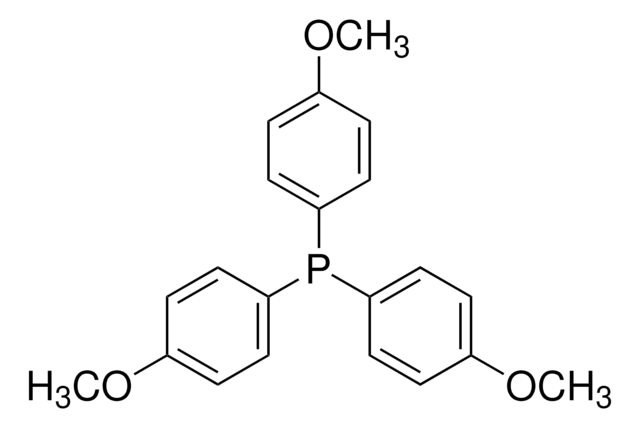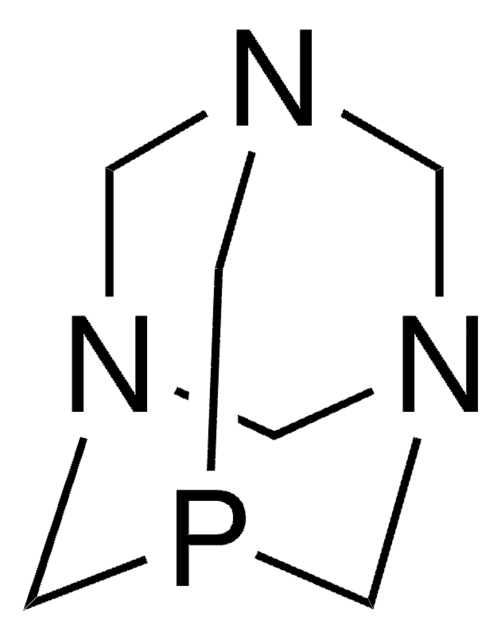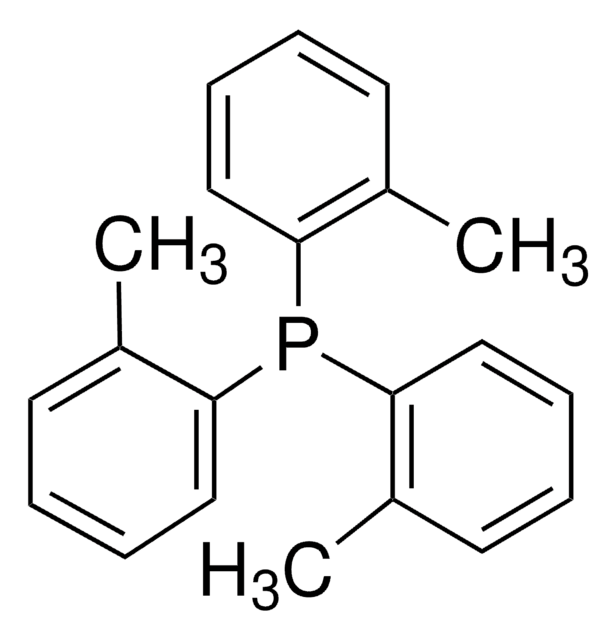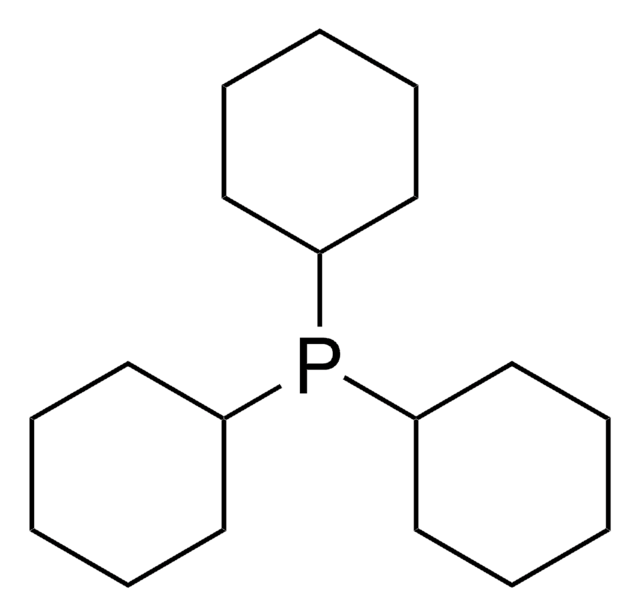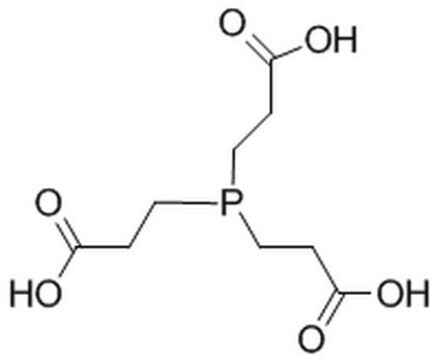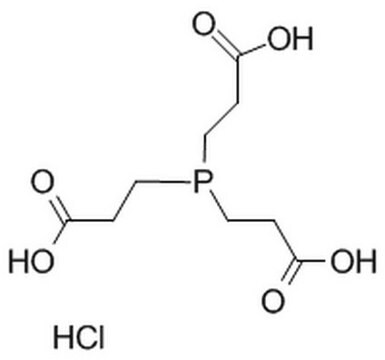777854
Tris(hydroxypropyl)phosphine
≥80%
Sinônimo(s):
THPP
Faça loginpara ver os preços organizacionais e de contrato
About This Item
Fórmula empírica (Notação de Hill):
C9H21O3P
Número CAS:
Peso molecular:
208.24
Número MDL:
Código UNSPSC:
12352128
ID de substância PubChem:
NACRES:
NA.22
Produtos recomendados
Ensaio
≥80%
forma
liquid
adequação da reação
reagent type: reductant
densidade
1.136 g/mL at 25 °C
cadeia de caracteres SMILES
OCCCP(CCCO)CCCO
InChI
1S/C9H21O3P/c10-4-1-7-13(8-2-5-11)9-3-6-12/h10-12H,1-9H2
chave InChI
YICAEXQYKBMDNH-UHFFFAOYSA-N
Descrição geral
Tris(hydroxypropyl)phosphine (THPP) is a reducing agent widely used for the reductive cleavage of disulfide bonds in small molecules in both aqueous–organic media.
Aplicação
Tris(hydroxypropyl)phosphine can be used:
- As a reducing agent in the reduction of dehydroascorbic acid to ascorbic acid
- In the cleavage of disulfide bonds in small molecules
- As a catalyst in the conversion of polysulfides
Palavra indicadora
Danger
Frases de perigo
Declarações de precaução
Classificações de perigo
Skin Corr. 1B
Código de classe de armazenamento
8A - Combustible corrosive hazardous materials
Classe de risco de água (WGK)
WGK 3
Ponto de fulgor (°F)
Not applicable
Ponto de fulgor (°C)
Not applicable
Escolha uma das versões mais recentes:
Já possui este produto?
Encontre a documentação dos produtos que você adquiriu recentemente na biblioteca de documentos.
Os clientes também visualizaram
Hairong Wang et al.
Biomaterials, 181, 310-317 (2018-08-11)
Tumor hypoxia is known to be one of critical factors that aggravate the tumor resistance to photodynamic therapy (PDT) in which oxygen is essential for tumor destruction. Herein, catalase, an enzyme to trigger hydrogen peroxide (H2O2) decomposition, is modified by
Victoria J Valerón Bergh et al.
Pharmaceutical development and technology, 23(8), 761-770 (2017-04-01)
Dry alginate foams intended for antibacterial photodynamic therapy (aPDT) of infected wounds were prepared. aPDT is a treatment modality involving light of appropriate wavelength, oxygen and a photosensitizer (PS) to produce radicals that attack biological targets (e.g. bacteria). The hydrophobic
Cyrille Megel et al.
Nucleic acids research, 47(2), 941-952 (2018-11-22)
RNA fragments deriving from tRNAs (tRFs) exist in all branches of life and the repertoire of their biological functions regularly increases. Paradoxically, their biogenesis remains unclear. The human RNase A, Angiogenin, and the yeast RNase T2, Rny1p, generate long tRFs
Kristine Opsvik Wikene et al.
Journal of photochemistry and photobiology. B, Biology, 171, 27-33 (2017-05-05)
Natural deep eutectic solvents (NADES) are a third class of liquids, separate from water and lipids. Some NADES, especially those containing organic acids, have been suggested to possess antimicrobial properties. Such properties may be advantageous when NADES are used as
Designing dendritic polymers containing phosphorus donor ligands and their corresponding transition metal complexes.
Dasgupta M, et al.
Coordination Chemistry Reviews, 233(19), 223-235 (2002)
Nossa equipe de cientistas tem experiência em todas as áreas de pesquisa, incluindo Life Sciences, ciência de materiais, síntese química, cromatografia, química analítica e muitas outras.
Entre em contato com a assistência técnica



